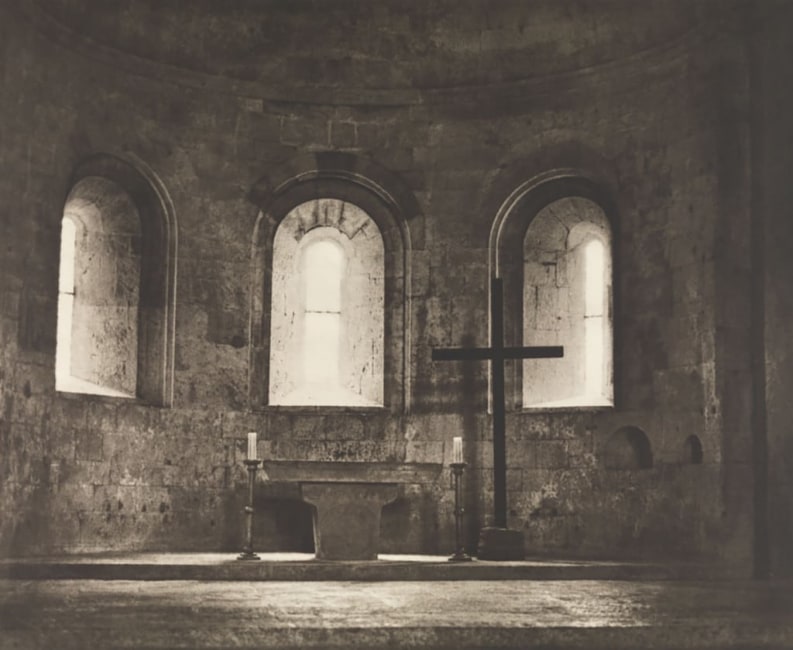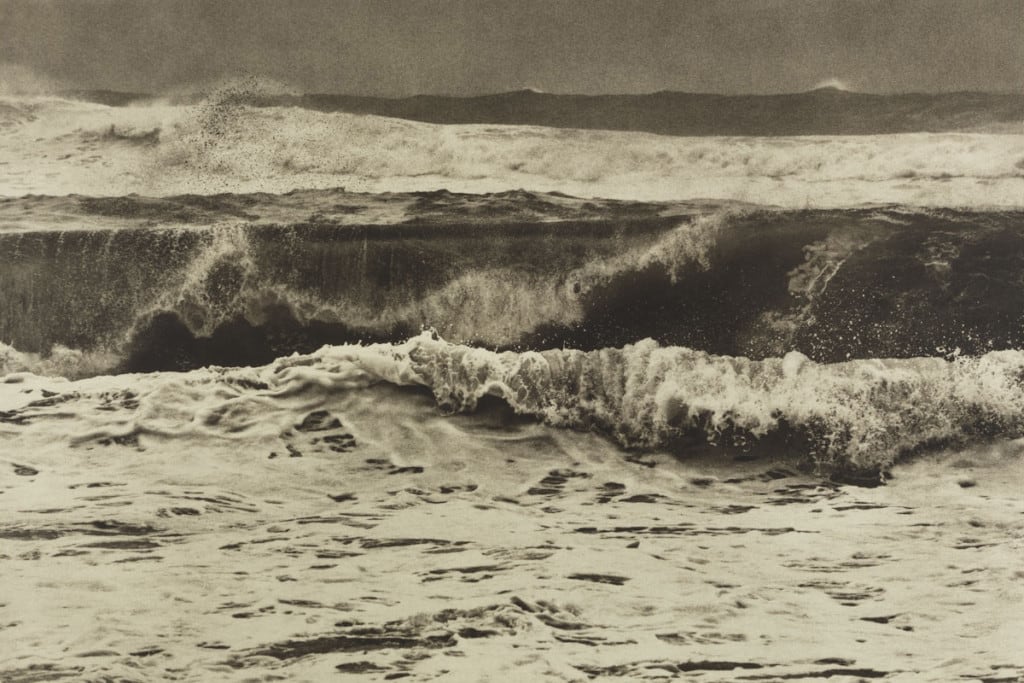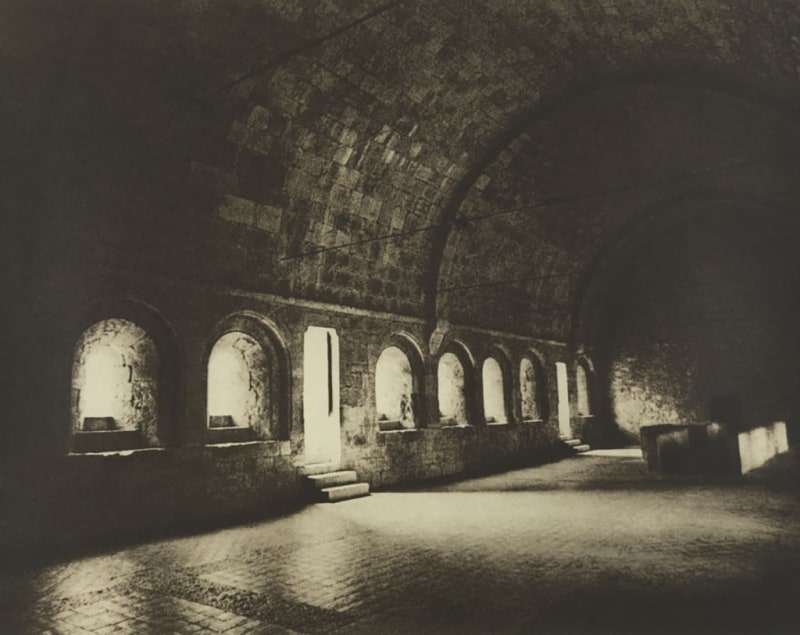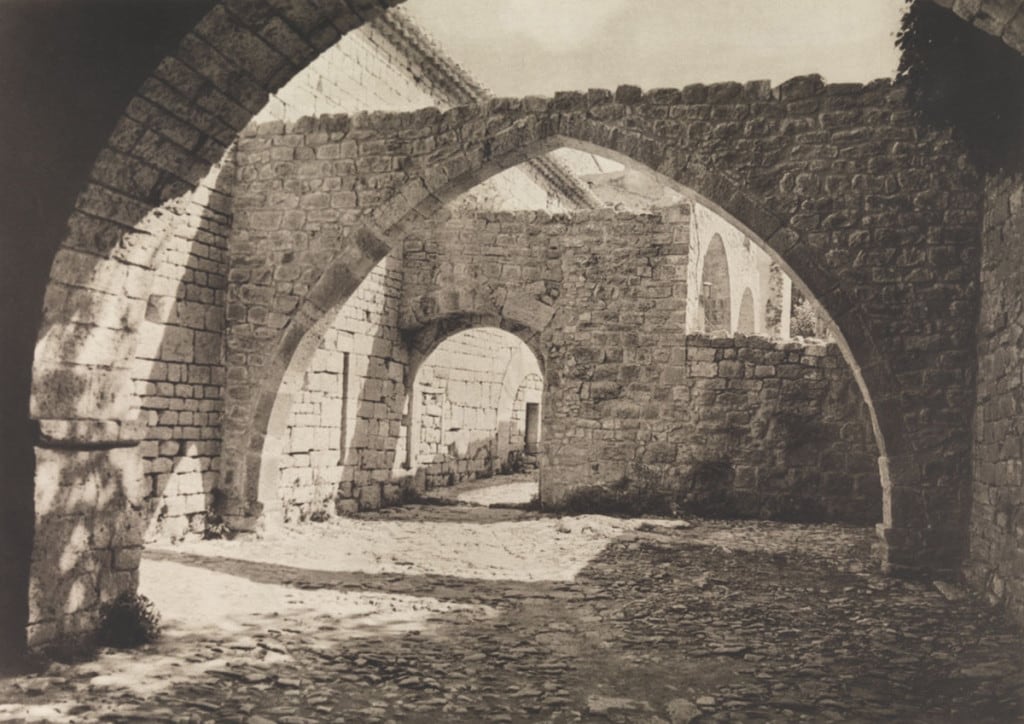The Fresson Process: A Marriage of History and Artistry
by Robert Rosenkranz
October 6, 2015

Apse, Le Thoronet Abbey, 2002
56 x 69 cm
Fresson print
The Fresson process, commonly referred to as direct carbon printing, reveals a depth and richness in photographs that is truly unmatched. The images combine the moody quality and textural richness of a charcoal drawing with the detail and resolution of photography.
In 1899, Théodore-Henri Fresson showed the French Society of Photography “Photographic prints made on charcoal paper made without transfer.” He managed to achieve this result by preparing his paper with several coats of different light-sensitive layers. The insoluble ones were close to the paper.
Fresson famously did not patent his process, but maintained a high level of secrecy surrounding the production details. Even today the process remains proprietary, though further details are known: the prints were developed using a slurry of sawdust and water in which the friction of the sawdust helped remove the soluble gelatin.

Sea III, 2010
63 x 92 cm
Fresson print

Vault, Le Thoronet Abbey, 2002
57 x 71 cm
Fresson print
Leveraging techniques from the charcoal printing process, today’s Fresson prints are generally created with black ivory on smooth, verge or watercolor paper. A continuous artificial UV light source is focused directly on the pigmented paper via a special lens. The process is time-consuming but produces archival quality prints able to be enlarged up to 60 x 80 cm. While charcoal paper is not used elsewhere today, the Fresson family still produces direct charcoal prints.
The Fresson Process continues to be widely regarded among discerning photographic enthusiasts in part because of the very things that make others look down upon it: difficulty, complexity and time.
The hallmark of the Fresson process is the signature graininess and distinctive reticulation patterns. Graininess can be controlled through the coating process to deliver the desired level of texture in a final print. With an archival quality close to that of platinum, Fresson prints stand alone. It is for this reason that countless museums, national archives and private collectors seek out these works.

Courtyard, Le Thoronet Abbey, 2002
55 x 77 cm
Fresson print
I travelled to the Fresson laboratory in France where T. H. Fresson’s grandson and great-grandson keep alive his innovation, his spirit and his heritage. There in the outskirts of Paris, select photographs from both my Le Thoronet Abbey and Sea Series were brought to life in a limited edition of Fresson prints.
Even on a computer screen, the elegance and ruggedness of the images are distinctly Fresson. Every grain takes its own form. Palpable textures leap from the prints, almost inviting one to touch the rocky landscape of the sea or the ancient stone walls of the hallowed Abbey.
At once sober and grand, the Fresson process ultimately settles to be neither, but simply allows the phenomenological reflection of both stone and water to live on paper.
— Robert Rosenkranz